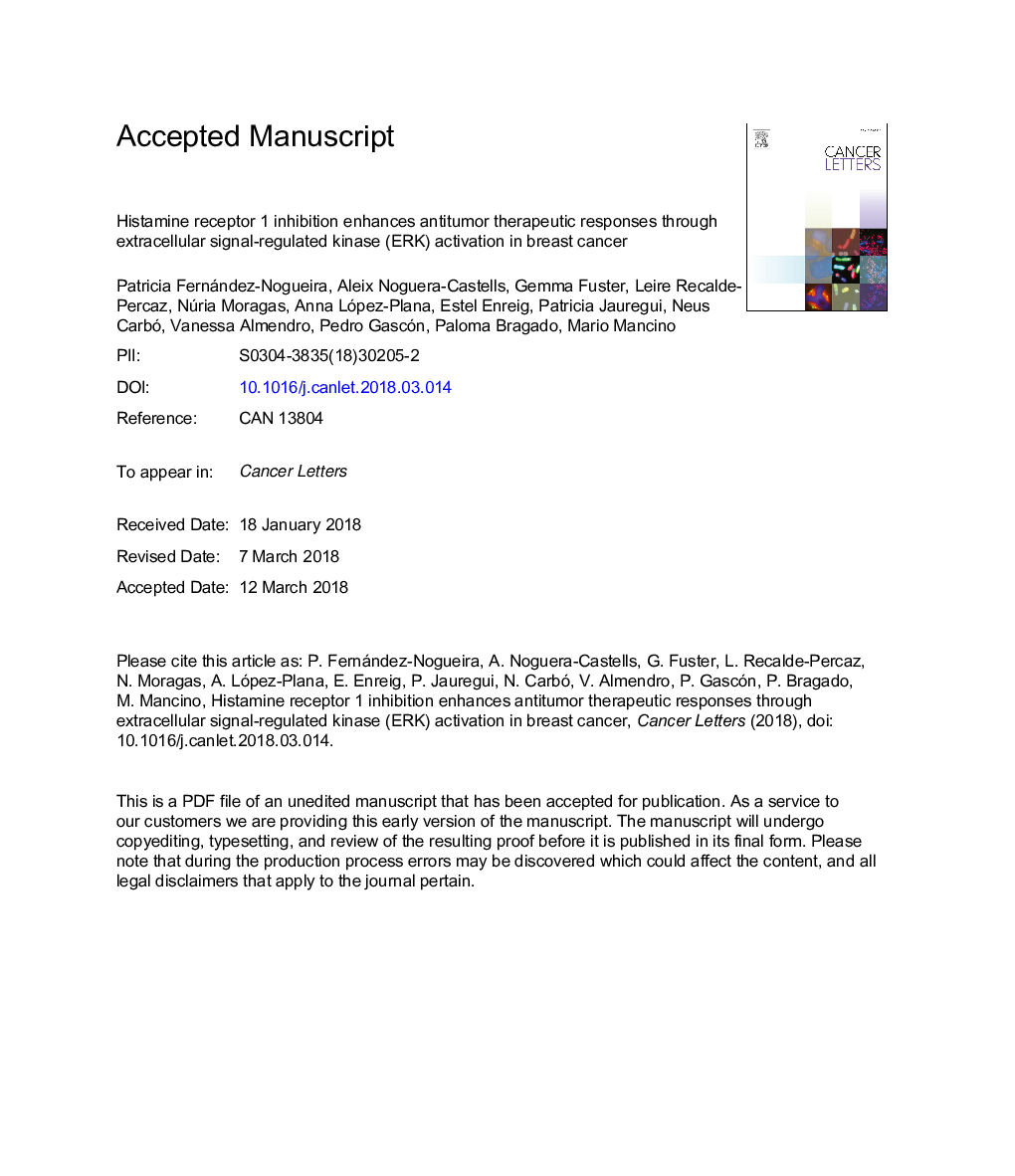| Article ID | Journal | Published Year | Pages | File Type |
|---|---|---|---|---|
| 8434481 | Cancer Letters | 2018 | 43 Pages |
Abstract
Histamine receptor 1 (HRH1) belongs to the rhodopsin-like G-protein-coupled receptor family. Its activation by histamine triggers cell proliferation, embryonic development, and tumor growth. We recently established that HRH1 is up-regulated in basal and human epidermal growth factor receptor 2 (HER2)-enriched human breast tumors and that its expression correlates with a worse prognosis. Nevertheless, the functional role of HRH1 in basal and HER2-targeted therapy-resistant breast cancer (BC) progression has not yet been addressed. Using terfenadine, a selective chemical inhibitor of HRH1, we showed that the inhibition of HRH1 activity in basal BC cells leads to sub-G0 cell accumulation, suppresses proliferation, promotes cell motility and triggers the activation of extracellular signal-regulated kinase (ERK) signaling, initiating the mitochondrial apoptotic pathway. Furthermore, HER2-targeted therapy-resistant cells express higher levels of HRH1 and are more sensitive to terfenadine treatment. Moreover, in vivo experiments showed that terfenadine therapy reduced the tumor growth of basal and trastuzumab-resistant BC cells. In conclusion, our results suggest that targeting HRH1 is a promising new clinical approach to consider that could enhance the effectiveness of current therapeutic treatment in patients with basal and BC tumors resistant to HER2-targeted therapies.
Related Topics
Life Sciences
Biochemistry, Genetics and Molecular Biology
Cancer Research
Authors
Patricia Fernández-Nogueira, Aleix Noguera-Castells, Gemma Fuster, Leire Recalde-Percaz, Núria Moragas, Anna López-Plana, Estel Enreig, Patricia Jauregui, Neus Carbó, Vanessa Almendro, Pedro Gascón, Paloma Bragado, Mario Mancino,
